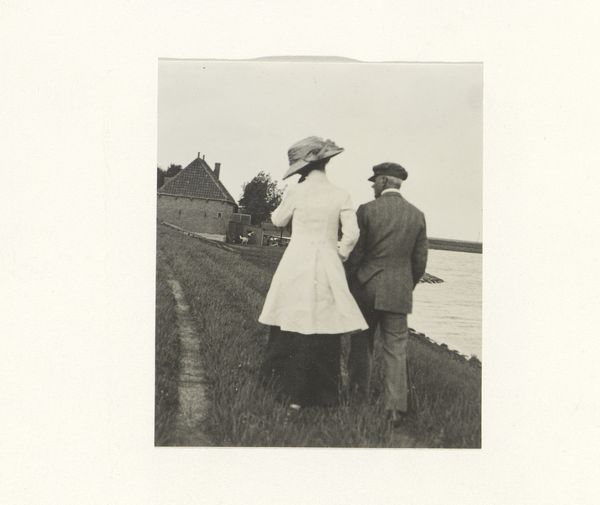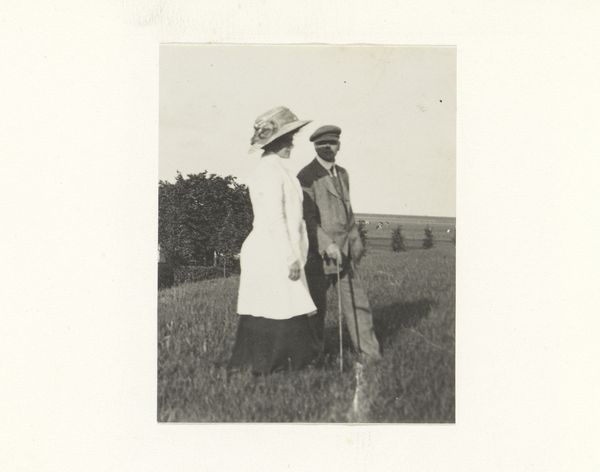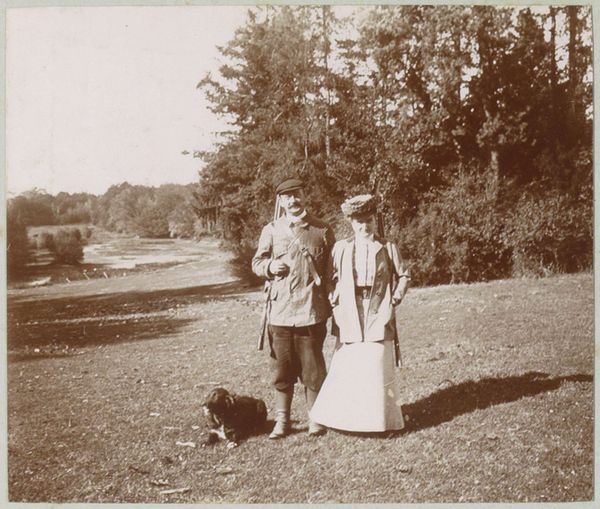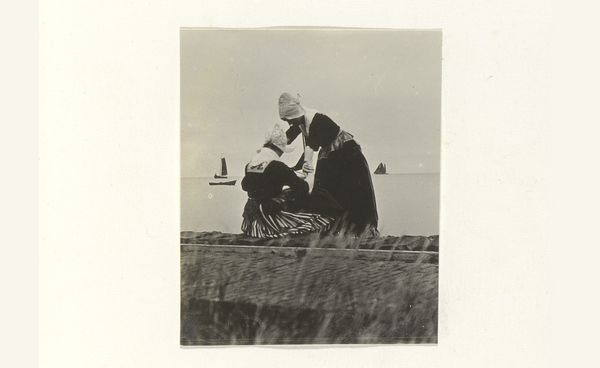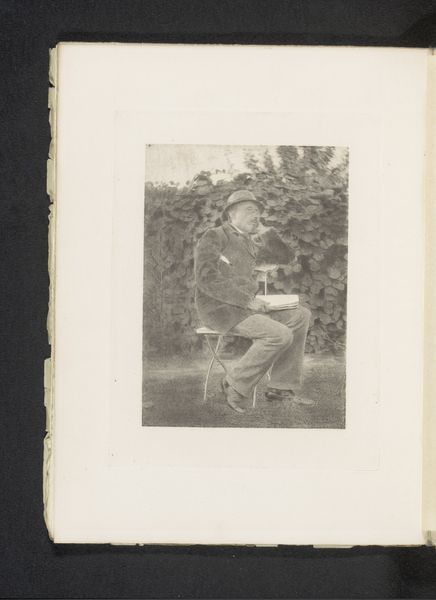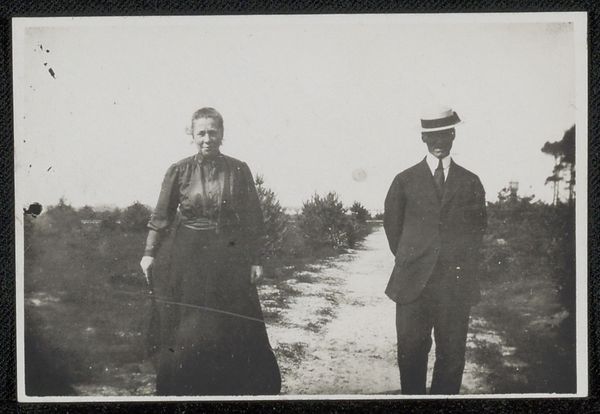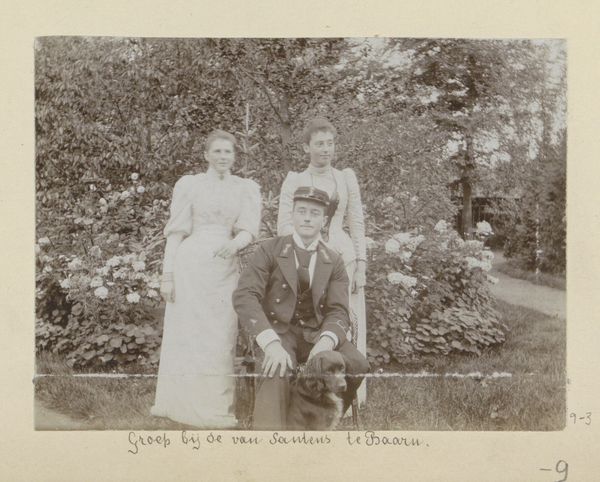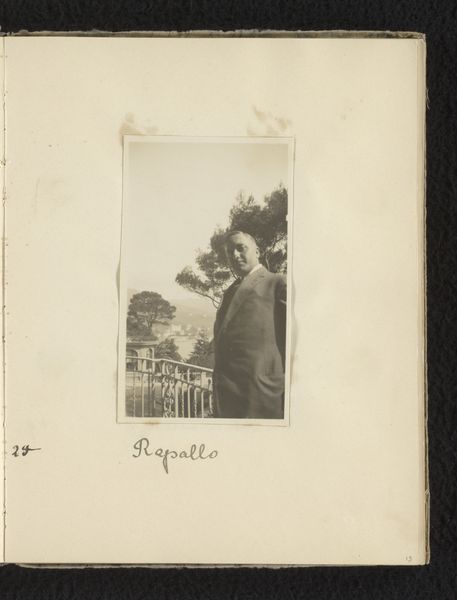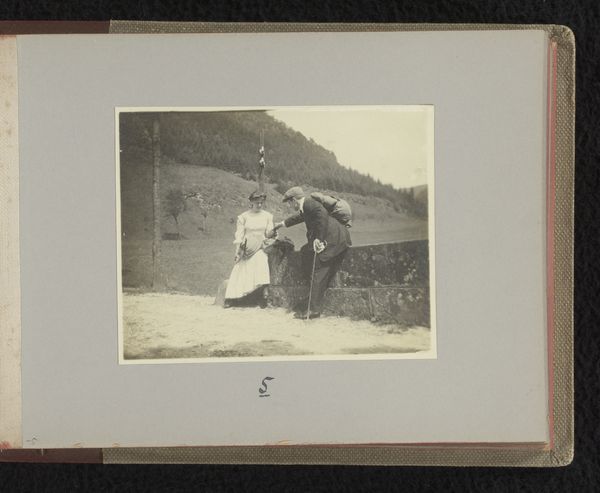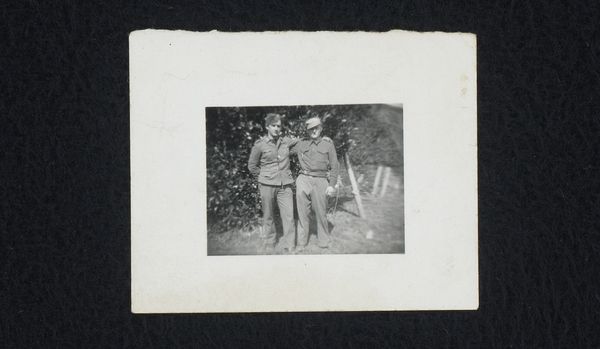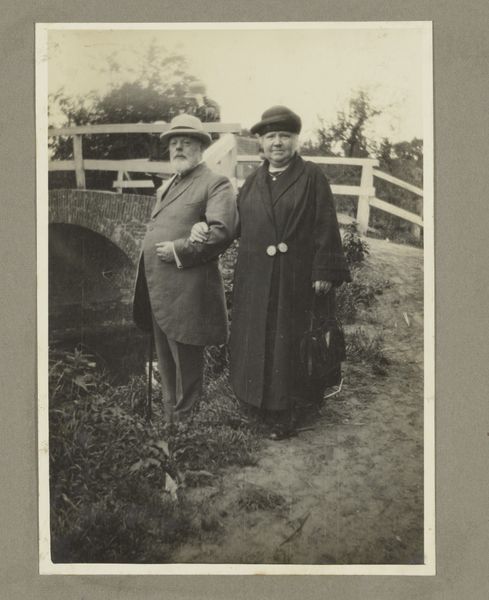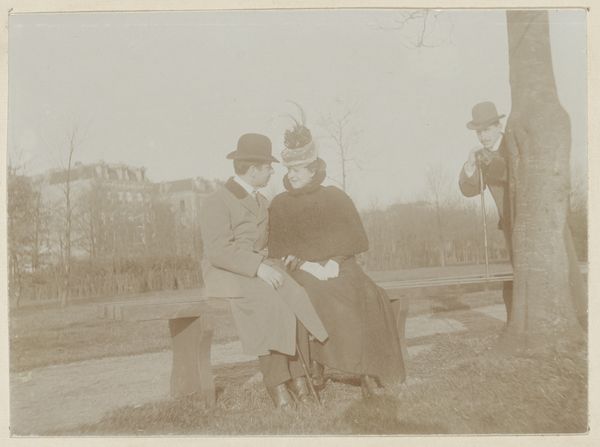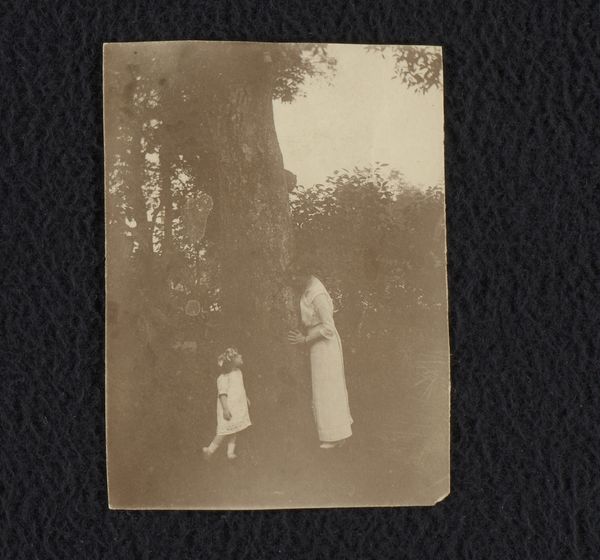
photography, gelatin-silver-print
#
portrait
#
pictorialism
#
light coloured
#
landscape
#
photography
#
portrait reference
#
gelatin-silver-print
#
limited contrast and shading
#
genre-painting
#
remaining negative space
Dimensions: height 87 mm, width 75 mm
Copyright: Rijks Museum: Open Domain
Curator: Here we have “Man en vrouw in het gras,” or “Man and Woman in the Grass,” a gelatin silver print estimated to date from 1900 to 1910, attributed to G. Hidderley. Editor: It evokes a quiet stroll. The grayscale flattens the texture of their garments, while the field occupies most of the frame. I sense a stillness, a lack of clear narrative. Curator: Precisely. Notice the interplay of light and shadow. Hidderley utilizes limited contrast and shading, softening the edges and imbuing the scene with a dreamlike quality reminiscent of Pictorialism. The couple recedes into the distance, away from us. Editor: This "Pictorialism" sounds… deliberate. I wonder about the materials Hidderley chose. Gelatin silver printing—was this about ease of reproduction, or did it enable certain aesthetic effects? The surface seems matte; was that a conscious choice tied to broader craft traditions of the era, contrasting with the glossier commercial photography? Curator: Certainly, the gelatin silver process offered flexibility. But, consider the composition. The horizon divides the image almost in half, challenging the conventional rules of landscape photography. It seems almost casual in its framing. It begs consideration to understand why the photographer adopted these structural motifs. Editor: To me, that so-called casualness highlights a tension— the seeming ease of strolling across a field belies what was likely quite deliberate image production, including posing and staging of what appear to be authentic materials for clothing and headwear, as well as a specific printing process and finish. It prompts questions: Were they a middle-class family on holiday, adopting the guise of a rural genre-painting subject? What did this photograph actually represent? Curator: These genre-painting aspects of this photo cannot be denied. Looking more deeply into that topic using this work and thinking methodically should offer additional opportunities to contemplate its artistic significance. Editor: Exactly. What we have, materially and compositionally, becomes a window into an array of questions, which provides a way for understanding and appreciating the subject itself.
Comments
No comments
Be the first to comment and join the conversation on the ultimate creative platform.
